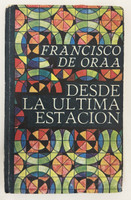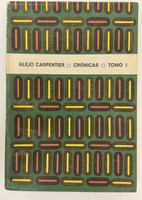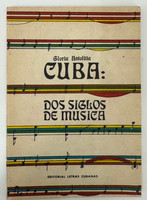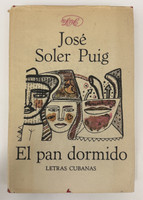- Travel
-
Exhibits
- La Portada Cubana
- Immortal Cuba: Artists Take on Their Heroes
- Seattle Poster Exhibit
- Sandra Dooley & Alejandrina Cué
- The Art of Wayacón
- Cuban Folk Art
- Cuba In Black And White
- 25 Years of Cuban Art Space
- Summer Folk Art Expo
- ¡SPRING AWAKENING FROM CUBA!
- Celebrating The Art Of Cuban Women
- Celebrating Paper, Affordable Art from Cuba
- Art of the Revolution
- Outsider Art
- Lost and Found
- En la lucha: Celebrating Cuban Women and Their Art
- Cuban Art Stash
- 100 Fires: 5 Cienfuegos Artists' Work on Paper
- Waya + Monte! Magic Realism in Cienfuegos
- Viva Cuba Viva! Poster Show
- Cultivando Sueños
- Black Lives Matter in Cuba Jan 9-March 27
- Leandro Soto: Crónicas visuales
- Cuban Canvas
-
Archive
- Global Reflection 2018: Spirit and Community
- Exhibit in the cloud: Contemporary Works on Paper
- MADE IN CUBA! MINNEAPOLIS EXHIBIT
- Cuban Posters and Photography from CCS collection
- AUTUMN SALE! Sept/Oct 2017
- SPRING ARTS AND CRAFT SALE
- Vuelo Directo/Non Stop: Alberto & Alejandro Lescay
- The Many Faces of Fidel
- Somos
- Made in Cuba!
- The US empire in Cuban graphics
- Made in Cuba/Seattle exhibit
- Entre Nos
- Looking Back
- Cuban Art Space
- Membership/Donate
- About Us
- Cuba News
-
Música y épica en la novela de Alejo Carpentier (Music and Epic in the Novel of Alejo Carpentier) is a critical literary study by Leonardo Acosta published by Editorial Letras Cubanas in 1981, examining how musical and epic elements interweave to give solidity and plasticity to the novelistic structures in the work of Cuba's most celebrated novelist. This sagacious and profound study permits a better understanding of Cuba's maximum literary figure.
Cover designer Raúl Martínez employs a sophisticated geometric composition with concentric squares creating a framing effect: a black outer border surrounds a rust-brown middle frame, which encloses a vibrant golden-orange inner square. At the center sits a small baroque ornamental motif rendered in yellow and brown, featuring elaborate scrollwork and stylized decorative elements reminiscent of colonial Spanish design. The title and author's name appear in bold orange lettering against the black background, creating strong visual contrast and hierarchy.
Raúl Martínez was one of Cuba's most important artists and graphic designers, a pioneer of Cuban pop art who became instrumental in shaping revolutionary Cuba's visual culture through his poster designs and book covers. His design choice here is particularly appropriate given the book's subject matter—Alejo Carpentier, whose novels like El reino de este mundo (The Kingdom of This World, 1949), Los pasos perdidos (The Lost Steps, 1953), and El siglo de las luces(Explosion in a Cathedral, 1962) are renowned for their baroque literary style, musical structures, and engagement with Caribbean and Latin American history. Martínez's ornamental baroque motif at the center references Carpentier's concept of "lo real maravilloso" (the marvelous real) and his elaborately constructed prose that draws extensively from music theory and composition.
Leonardo Acosta, born in Havana in 1933, is a distinguished journalist, literary critic, and professional music critic who has published extensively including the short story collection Paisajes del hombre and the essay José Martí, la América precolombina y la conquista española. His articles on music have appeared in the journal Revolución y Cultura, and he collaborates with other publications while working for ICRT (Instituto Cubano de Radio y Televisión).
The back cover explains: "The volume we offer the reader today is an interesting analysis of the form in which epic and musical elements intertwine, giving solidity and plasticity to novelistic structures in Carpentier's work." This scholarly study represents the kind of serious literary criticism promoted by Editorial Letras Cubanas during the revolutionary period, when Cuban intellectuals worked to establish a rigorous critical tradition examining the nation's cultural production.
The book includes a section titled "A manera de prólogo" (As a manner of prologue) and features the complete works list including references to Leonardo Acosta's own publications and Carpentier's major novels from the 1980s. The "Al Lector" (To the Reader) page invites readers to provide feedback on the work's presentation and design to Editorial Letras Cubanas at Calle G No. 505, El Vedado, Ciudad de La Habana, demonstrating the publisher's commitment to reader engagement and continuous improvement of their editorial standards.
-
-
Discover More at the Center for Cuban Studies







